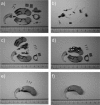Designing of a digital behind-the-ear hearing aid to meet the World Health Organization requirements
- PMID: 20724354
- PMCID: PMC4111354
- DOI: 10.1177/1084713810380934
Designing of a digital behind-the-ear hearing aid to meet the World Health Organization requirements
Abstract
Hearing loss is a common health issue that affects nearly 10% of the world population as indicated by many international studies. The hearing impaired typically experience more frustration, anxiety, irritability, depression, and disorientation than those with normal hearing levels. The standard rehabilitation tool for hearing impairment is an electronic hearing aid whose main components are transducers (microphone and receiver) and a digital signal processor. These electronic components are manufactured by supply chain rather than by hearing aid manufacturers. Manufacturers can use custom-designed components or generic off-the-shelf components. These electronic components are available as application-specific or off-the-shelf products, with the former designed for a specific manufacturer and the latter for a generic approach. The choice of custom or generic components will affect the product specifications, pricing, manufacturing, life cycle, and marketing strategies of the product. The World Health Organization is interested in making available to developing countries hearing aids that are inexpensive to purchase and maintain. The hearing aid presented in this article was developed with these specifications in mind together with additional contemporary features such as four channels with wide dynamic range compression, an adjustable compression rate for each channel, four comfort programs, an adaptive feedback manager, and full volume control. This digital hearing aid is fitted using a personal computer with minimal hardware requirements in intuitive three-step fitting software. A trimmer-adjusted version can be developed where human and material resources are scarce.
Figures
Comment in
-
Hearing for the masses.Trends Amplif. 2010 Jun;14(2):63. doi: 10.1177/1084713810381273. Trends Amplif. 2010. PMID: 20724353 Free PMC article. No abstract available.
Similar articles
-
A self-fitting hearing aid: need and concept.Trends Amplif. 2011 Dec;15(4):157-66. doi: 10.1177/1084713811427707. Epub 2011 Dec 4. Trends Amplif. 2011. PMID: 22143873 Free PMC article.
-
Hearing for the masses.Trends Amplif. 2010 Jun;14(2):63. doi: 10.1177/1084713810381273. Trends Amplif. 2010. PMID: 20724353 Free PMC article. No abstract available.
-
Cost-effective hearing rehabilitation: a role for self-fitting hearing aids?Trends Amplif. 2011 Dec;15(4):155-6. doi: 10.1177/1084713812439798. Epub 2012 Apr 5. Trends Amplif. 2011. PMID: 22491445 Free PMC article. No abstract available.
-
Assembly and insertion of a self-fitting hearing aid: design of effective instruction materials.Trends Amplif. 2011 Dec;15(4):184-95. doi: 10.1177/1084713811430837. Epub 2012 Mar 2. Trends Amplif. 2011. PMID: 22389434 Free PMC article. Review.
-
Technical and audiological factors in the implementation and use of digital signal processing hearing aids.Scand Audiol. 1997;26(4):223-9. doi: 10.3109/01050399709048011. Scand Audiol. 1997. PMID: 9428031 Review.
Cited by
-
LoCHAid: An ultra-low-cost hearing aid for age-related hearing loss.PLoS One. 2020 Sep 23;15(9):e0238922. doi: 10.1371/journal.pone.0238922. eCollection 2020. PLoS One. 2020. PMID: 32966301 Free PMC article.
-
A self-fitting hearing aid: need and concept.Trends Amplif. 2011 Dec;15(4):157-66. doi: 10.1177/1084713811427707. Epub 2011 Dec 4. Trends Amplif. 2011. PMID: 22143873 Free PMC article.
-
Innovative technology in hearing instruments: matching needs in the developing world.Trends Amplif. 2011 Dec;15(4):209-14. doi: 10.1177/1084713811424887. Epub 2011 Nov 7. Trends Amplif. 2011. PMID: 22068223 Free PMC article.
-
Remote hearing aid fitting: Tele-audiology in the context of Brazilian Public Policy.Int Arch Otorhinolaryngol. 2012 Jul;16(3):371-81. doi: 10.7162/S1809-97772012000300012. Int Arch Otorhinolaryngol. 2012. PMID: 25991960 Free PMC article.
References
-
- Bento R. F., Miniti A., Marone S. A. M. (1998). Tratado de otologia, Trans. Handbook of Otorhinolaryngology (1st ed.). Sao Paulo, Brazil: EDUSP
-
- Bess F. H., Klee T., Culbertson J. L. (1986). Identification, assessment, and management of children with unilateral sensorineural hearing loss. Ear and Hearing, 7, 43–51 - PubMed
-
- Boymans M., Goverts S. T., Kramer S. E., Festen J. M., Dreschler W. A. (2008). A prospective multi-centre study of the benefits of bilateral hearing aids. Ear and Hearing, 29, 930–941 - PubMed
-
- Carmen R. (2001). The consumer handbook on hearing loss and hearing aids (2nd ed.). Sedona, AZ: Auricle Ink
Publication types
MeSH terms
LinkOut - more resources
Full Text Sources
Medical




